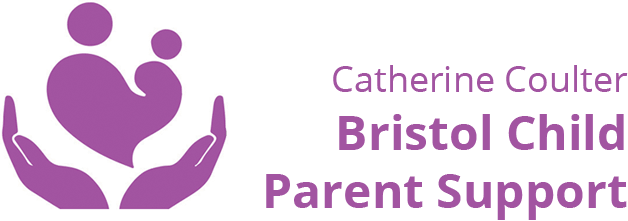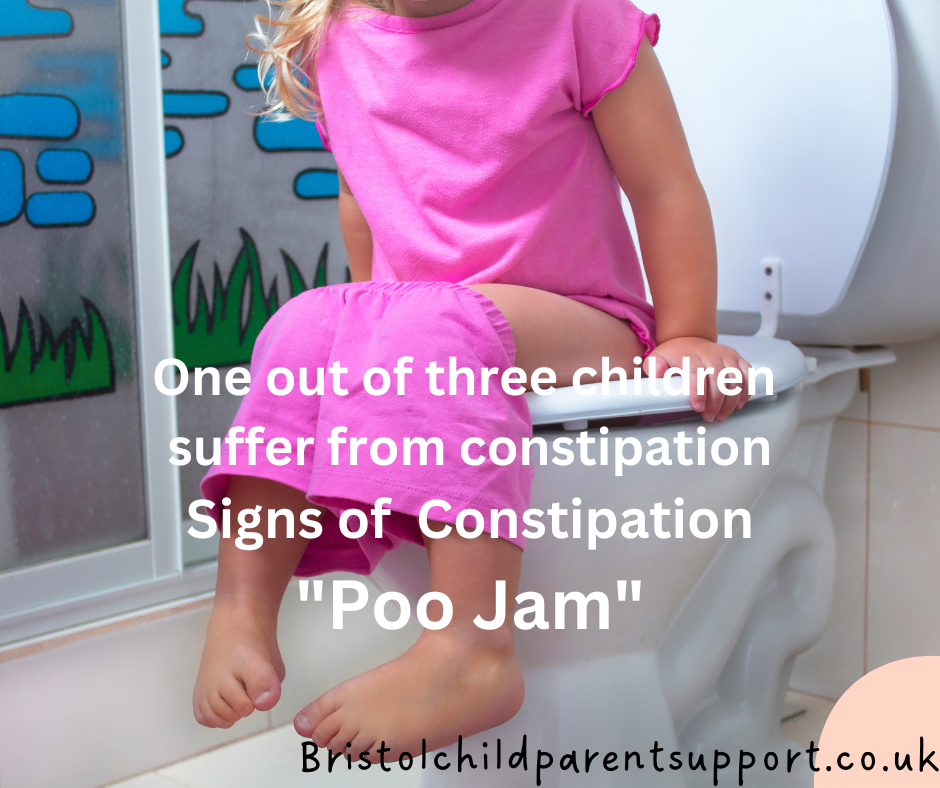Working with children and families for decades, I have noticed that many parents miss the signs of constipation or a “poo jam” (my friendlier name). Constipated children are often reluctant to open their bowels on the toilet due to previous experiences of passing a painful poo. This is not because they are naughty or acting out; it is because it hurts or has hurt in the past. The child may become distressed at needing to do a poo, and be seen as ‘holding on’. As a result, children experience a devastating loss of self-esteem. Accidents can lead to shame, embarrassment, hopelessness, and anxiety.
I work with families who have had to cope with the emotional fallout from years of accidents and untreated (or undertreated) constipation.
One out of three children is estimated to suffer from constipation; constipation is often underreported due to embarrassment and shame.
Also, research from the NHS says parents say their children’s behaviour is different when they have constipation. They are more irritable, aggressive, and have temper tantrums. They also have disturbed sleep and frequent straining and withholding.
Signs of constipation are below:
1. Your child passes extra giant poo
If you wonder how frequently your child has defecated such a large stool, they are likely constipated.
2. Firm Stools
Their poo may look like pellets, little lumps, and seem hard. Furthermore, you can check their poo on the Bristol Stool Chart. The Bristol Stool Chart was developed in 1997 as a clinical assessment tool. According to the Bristol Stool Chart, there are seven types of poo.
- Type 1-2 and even three may indicate constipation.
- Type 4- 5 are typical as they are easier to pass.
- Type 6 may also be acceptable if there has been an increase in fibre and water intake.
- Type 7 may indicate diarrhoea or overflow from constipation.
https://web.archive.org/web/20110205170819/http://en.wikipedia.org/wiki/File:Bristol_Stool_Chart.png
3. Tummy ache
You may notice your child complains of a tummy ache, has a full stomach, and has a tantrum or meltdown that often is relieved after going to the toilet.
4. Bedwetting and daytime ( Enuresis)
A big “poo jam” fills up in the rectum, aggravating the bladder nerves, hence bedwetting and frequent trips to the toilet during the day.
5. Wind
Your child’s poo is likely smelly; they suffer from wind and have bad breath.
6. Straining on the toilet
Children experience pain when they poo and need to strain. Additionally, there may even be some bleeding when they poo or afterwards. Hard, large poos can cause an ‘anal fissure’ or a small tear in the bottom. Therefore, they may avoid using the toilet or potty and hide nappies. I often work with parents whose child becomes anxious about using the toilet.
7. Super loose poo
Children often have lots of loose poo, but it may also overflow from impaction if it is frequent.
8. Infrequent pooping.
Remember, just because your child has a daily poo doesn’t rule out constipation. The research demonstrates that 50% of children who poo daily are still constipated, so we know pooping every day isn’t enough to rule out constipation.
9. Itchy bottom and skid marks in their pants.
A big poo jam means the bowel can’t empty; hence, the bottom is hard to wipe, leaving poop stains in their pants. As a result, their bottoms are itchy.
About constipation
If not recognised and treated, bowel actions (poo) may become harder and less frequent, and soiling can occur. You may not realise that constipation is the underlying problem. There may be hard poo inside the bowel, and the soiling is soft runny poo leaking around the hard poo. Over time, your child’s bowel becomes less sensitive. This means they won’t feel when poo needs to come out and has an accident. Also, children can be anxious about using the toilet and may start to contract their pelvic floor muscles instead of relaxing and letting the stool pass. If your child notices the feeling of wanting to poop or having a wee, it’s called interoception..
What is Interoception?
Intraception is a sense within our bodies that lets us notice internal sensations, like a racing heart, a growling stomach, or a full bladder or a poo. When treating constipation in children, work on educating them about the problem and working on relaxing their pelvic floor muscles. Also, remember to tell them to pay attention to how their body feels.. For more information on interoception, go to Kelly Mahlers Website. It is just great.
The difference between impaction and constipation
According to the charity Bladder and Bowel Uk:
Constipated children tend to pass infrequently formed stools, which may be very large and hard. There may be some smaller poos, soiling or skid marks in their pants due to them holding on and stopping themselves from doing a poo, but they are generally clean between bowel movements.
Children who are often impacted cannot pass formed poos. They pass loose, mushy or semi-solid poos, sometimes numerous times per day. They may also pass small hard bits of stools. They often do this without any awareness and will deny it has happened.
It is difficult to recognise the difference between constipation and faecal impaction, as the symptoms are similar. However, it is essential to distinguish between them as they require different treatment approaches. Consequently, diagnosing these conditions in children is not always straightforward; therefore, asking your child’s healthcare professional for advice is essential.
How can you help with constipation?
Do not hesitate to seek help from your GP, Paediatrician, or school nurse. This is a medical issue and needs to be treated as one.
Increase your child’s fluid intake.
Drinking more water is the one thing that will help your child’s constipation. Water is removed when food digests and goes through the GI tract, and the stool can become very dry and hard. This is painful for your child to push out. Drinking plenty of fluids helps keep as much moisture in the stools as possible to help prevent this. But how much water is enough?
The Bladder and Bowel charity recommends:
600mls for children aged 7–12 months, 900mls for 1–3-year-olds, 1200mls for 4–8-year-olds, 1600mls for girls aged 9– 3 years old, 1800mls for boys aged 9–13 years old, 1800mls for girls aged 14–18 years old and 2600mls for boys aged 14–18 years old.
Working with Schools
Many children struggle to receive help from schools or nurseries to increase fluid intake or need help cleaning up.
It is essential to tell the school that constipation is a medical issue and speak to their class teacher or Senco.
Most people don’t talk about bladder and bowel conditions, but they affect children of all ages. Therefore, teachers may not understand that the child is fidgeting because they need the toilet, are just not concentrating, or have behaviour problems. They may also believe that the child asking to go to the bathroom usually tries to escape classroom routines or difficult work. I always advise they use the same toilet; the toilets for disabilities are more private. Additionally, a bag with clean pants, clothes and wipes. A “pass card” to give the teacher if they need to go to the toilet makes a child feel less embarrassed.
Children who are very active, overweight or in hot environments will need more than this. Many children don’t like water, so foods such as watermelon with a high water content may also help.
Sitting Properly and having regular toilet times.
Regularly sitting on the potty or toilet as part of your child’s daily routine is one of the first steps for toilet training. Children who cannot sit independently need you to support them on the potty or toilet. Many children don’t sit properly on the toilet, which is essential.
- Place feet apart on a flat stool; legs should be open and supported- no dangling legs.
- Knees should be higher than hips
- Lean forward, resting elbows on knees
- Straighten spine
- Relax and maybe read, sing, and breathe or even sit with a toy or puzzle
Start by sitting your child on the potty or toilet for a short time once a day when you and your child are relaxed. Gradually build the time of sitting to about one minute for each year of their age, then increase the frequency of sitting. After meals is a good time; eating stimulates the bowel. You can have a shared home, nursery or school plan to help to establish a new toileting action plan.
Eating suitable types of fibre.
Soluble fibre-like oats, beans, lentils, chia seeds, nuts, apples, and strawberries dissolve in water and act like sponges. Eating foods with insoluble fibre can lower blood sugar and cholesterol, but it can make stool harder to pass. In contrast, soluble fibre draws water into the food, making it easier to move through the intestines. Examples of soluble fibre foods include whole grains, veggies, squash, avocados, and leafy greens.
Moreover, white bread, white pasta, bananas, and highly processed food high in fat may contribute to further constipation.
Contact a Therapist
If you and your child are experiencing anxiety around these issues and are in addition to a cycle of negativity, seek help, but this should be in combination with early medical intervention from your GP or health advisor.
References and Resources:
There are excellent resources at the Bladder and Bowel Uk Charity below.
https://www.bbuk.org.uk/children-young-people/resources-for-children/.
And ERIC at https://eric.org.uk/.
Remember: parenting is hard work, and you all deserve support. And when it all starts to feel impossible, ask for help. If you need help and support, contact me for a consultation or join my newsletter community. With Gratitude Catherine
If you enjoyed this blog post and found it helpful or inspiring, please share it with your friends on social media by clicking on the icons on the side. Thank you for visiting my website!
‘



